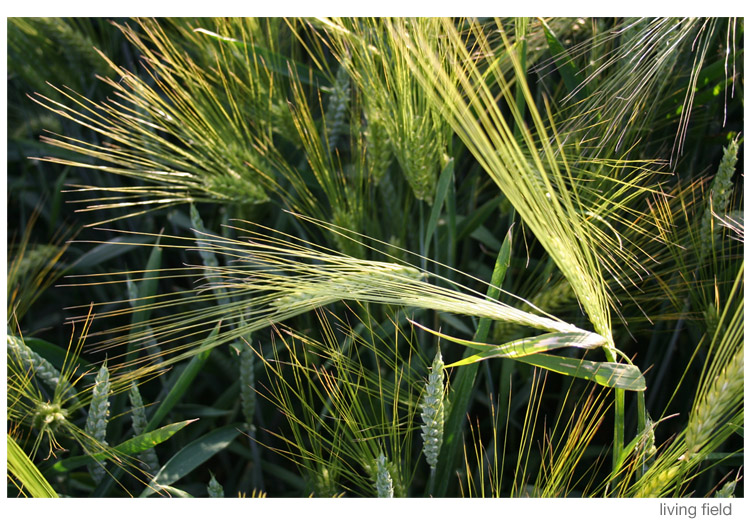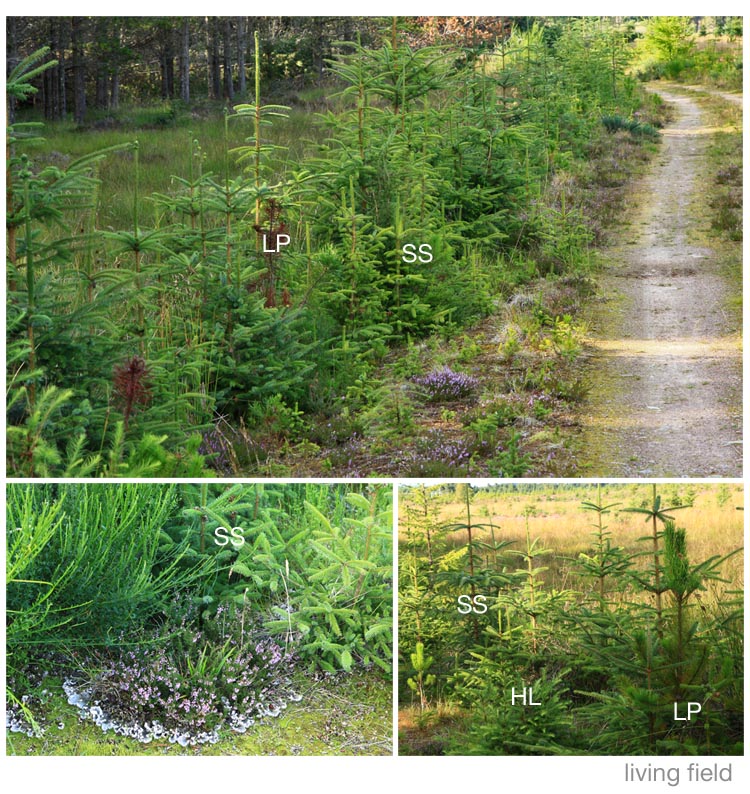Crops that become weeds – oilseed rape, potato, cereals, beet, beans; definitions – volunteers, ferals, wild relatives; their ecological and economic roles in the croplands.
There must have been since agriculture began a sort of uneasy relationship between crops and the weeds they generate. Most of the main crops drop seed that becomes buried in soil and emerges in a subsequent crop or gets transported around the countryside, turning up on waste ground or roadside.
Agriculturists have tried and still try without ultimate success to remove this desire of crops to drop their seed. Even global staples such as wheat and maize, that have been intensively selected and bred, still do it. Crops such as oilseed rape do it spectacularly, sometimes losing 10% or more of their seed at harvest, which turns up later as a weed of fields and a plant of waysides.
This dropping of seed is commonly, at worst, a local weed problem, and might over the ages have helped farmers find crop types more suited to their locality by exposing seed and emerged plants to strong selection pressures. But the dropping of seed begins to matter, and even figures in international debates and trade disputes, where the purity of a crop must be assured, as in the special case of GM crops.
This page introduces and defines volunteer weeds, ferals and wild relatives. More detail is given at:
- source crops for todays volunteers and ferals
- case study – the Brassica complex
- case study – potato
- case study – beet

Image above: barley volunteer weeds, recognisable by the fan shaped awns among the short,stubby, grey-green ears of a wheat crop.
Definitions – volunteers, ferals and wild relatives
Dropped seed that emerges and reproduces inside the tilled part of fields has come to be named volunteer (plural: volunteer or volunteers), while similar plants that become established on waysides and waste ground are named feral. The words volunteer and feral have become used in Europe to distinguish the environments in which plants are growing.
Volunteers are influenced by what goes on in the field – by soil cultivation, weedkillers, and competition with other plants. Ferals usually live in poor stony ground, often polluted, but have escaped from the annual cycle of control in fields and may have the chance to evolve away from the source crop. Volunteers and ferals may originate from exactly the same source crop – it’s where they grow that makes the difference in the name.
In addition, many crops have wild relatives with which they can cross-pollinate and so exchange genes. These wild relatives can be the same species (e.g. beet, carrot) or a different species (e.g. oilseed rape) depending on circumstances. This mixing of genes among crops, volunteers, ferals and wild relatives is part of the process by which wild plants are domesticated and crops lose their purity and perhaps even their domestication.
Ecological and economic roles of volunteers and ferals
In commercial agriculture, the commonest volunteers are derived from cereals such as wheat, barley and oat, oilseed rape, potato and in some areas beet. They are usually treated as a nuisance in much the same way as other weeds. Some volunteers may act as a bridge, carrying over disease between one crop and the next.
The broadleaf (dicotyledonous) volunteers such as oilseed rape and potato tend in Europe to have longer-lived seed than the grass (monocotyledonous) volunteers from the cereals. The seed of the broadleaf crops can last five to10 years in the soil, even longer. Potato also persists through tubers left in the field.
Volunteers and ferals are not all nuisance, however. Since the beginning of agriculture, they have been an insurance against a shortage of seed kept over the winter. Even today, some farmers harvest volunteer along with the crop, sometimes knowingly, sometimes not when it’s hard to tell the difference.
Volunteers and ferals generally add to the diversity of plant life in farmland and surrounding urban areas. Some are likely to bring more specific ecological benefits in the form of food and shelter for small animals and microbes. They have also taught us much about the way genetic material can be held, recombined and transmitted.
The potential ecological and economic impacts of GM volunteers and ferals will be examined in a separate article later in this series.
Even trees do it
Self-seeding, leading to possible nuisance, also occurs in plantation forest trees. Sitka spruce Picea sitchensis, lodgepole pine Pinus contorta and hybrid larch Larix x marschlinsii, three of the main imported species used extensively in plantation forestry, leave volunteers or ferals (depending where they are).

Images above show (top) a forest drive in Invernesshire lined by self-seeding sitka spruce (SS) and lodgepole pine (LP), (lower right) SS, LP and hybrid larch (HL) growing together, and (lower left) detail showing heather plant Calluna vulgaris ringed by leafy lichen and broom to the left and SS behind. Many of the lodgepole saplings here were dead or dying (see the brown shoots in the upper image).
The web site of the Forestry Commission holds information on the various trees grown for timber. See for example the page on sitka spruce.
